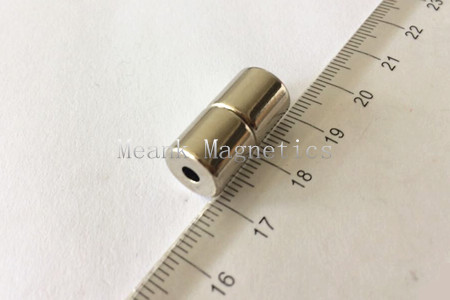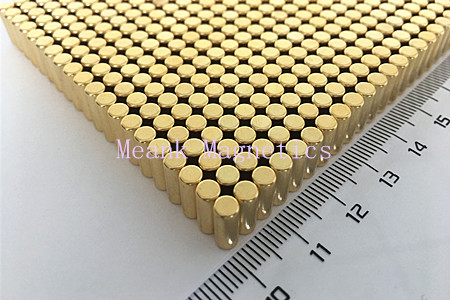Permanent magnets stand as remarkable marvels in the realm of magnetism, boasting the ability to retain their magnetic properties indefinitely, without reliance on external forces. Unlike their temporary counterparts, which relinquish their magnetism upon removal from an external magnetic field, permanent magnets endure as steadfast sources of attraction. Crafted from materials endowed with ferromagnetic prowess—such as iron, nickel, cobalt, and an array of alloys—these magnets find themselves at the heart of countless applications spanning industries and technologies. From propelling the motion of electric motors to orchestrating the symphony of sound in speakers, from facilitating data storage in magnetic tapes to aiding in medical diagnostics with MRI machines, permanent magnets epitomize ingenuity and utility in their unwavering magnetic prowess.
A permanent magnet is a type of magnet that retains its magnetic properties over an extended period without the need for an external magnetic field. Unlike temporary magnets, which lose their magnetism when the external magnetic field is removed, permanent magnetic material for sale maintain their magnetization indefinitely. These magnets are typically made from materials with ferromagnetic properties, such as iron, nickel, cobalt, or certain alloys and compounds. Permanent magnets are commonly used in a wide range of applications, including electric motors, generators, speakers, magnetic storage devices (such as hard drives and magnetic tapes), magnetic separation equipment, and various electronic devices. Their ability to produce a magnetic field without the need for an external power source makes them essential components in numerous technological and industrial processes.
Permanent magnets are typically made from materials that exhibit ferromagnetism, a property where certain materials can retain magnetic properties even after the removal of an external magnetic field. Some common materials used to create permanent magnets include:
Alnico (Aluminum-Nickel-Cobalt): Alnico magnets are composed of aluminum, nickel, cobalt, and other elements such as iron and copper. They are known for their strong magnetic properties and high coercivity, making them suitable for various industrial and commercial applications.
Neodymium (NdFeB): Neodymium magnets, also known as NdFeB magnets, are the strongest type of permanent magnets commercially available. NdFeB rod magnets for sale are made from an alloy of neodymium, iron, and boron and are widely used in electronic devices, motors, and magnetic assemblies.
Samarium Cobalt (SmCo): Samarium cobalt magnets are another type of rare-earth magnet known for their high magnetic strength and temperature stability. They are composed of samarium, cobalt, and traces of other elements and are used in applications requiring high operating temperatures and strong magnetic fields.
Ceramic (Ferrite): Ceramic magnets, also known as ferrite magnets, are made from a mixture of iron oxide and barium or strontium carbonate. They are relatively inexpensive and widely used in applications such as refrigerator magnets, speakers, and magnetic assemblies.
These materials possess intrinsic magnetic properties that allow them to retain their magnetization over time, making them suitable for various industrial, commercial, and consumer applications where a permanent magnetic field is required.
Permanent magnets are utilized in a multitude of applications across various industries due to their ability to generate a magnetic field without the need for an external power source. Some common uses of permanent magnets include:
Electric Motors and Generators: Permanent magnets are crucial components in electric motors and generators, where they provide the magnetic field necessary for the conversion of electrical energy into mechanical energy (motors) or vice versa (generators). They are commonly found in appliances, automotive systems, industrial machinery, and renewable energy technologies like wind turbines.
Speakers and Audio Devices: Permanent magnets play a vital role in speakers and audio devices by producing the magnetic field that interacts with electrical signals to generate sound waves. They are integral components in headphones, loudspeakers, microphones, and other audio equipment.
Magnetic Storage Devices: Permanent magnets are utilized in magnetic storage devices such as hard disk drives (HDDs) and magnetic tapes for data storage. The magnets help in reading and writing data by altering the magnetization of the storage medium's surface.
Magnetic Separation Equipment: Permanent magnets are used in magnetic separation equipment to extract magnetic materials from non-magnetic substances. This technology is employed in industries such as mining, recycling, food processing, and wastewater treatment to separate and purify materials.
MRI Machines: Permanent magnets are essential components in magnetic resonance imaging (MRI) machines used in medical diagnostics. These magnets generate the strong magnetic fields required to produce detailed images of internal body structures and tissues.
Consumer Electronics: Permanent magnets are present in numerous consumer electronics products, including smartphones, tablets, laptops, and electric appliances. They are used in vibration motors, magnetic closures, magnetic latches, and other components.
Automotive Applications: Permanent magnets are increasingly used in automotive applications, particularly in electric vehicles (EVs) and hybrid vehicles. They power electric motors, regenerative braking systems, and other components, contributing to improved efficiency and performance.
Overall, the versatility and reliability of permanent magnets make them indispensable in a wide range of technological, industrial, and consumer applications, where they contribute to efficiency, functionality, and innovation.
In conclusion, the ubiquity and versatility of permanent magnets transcend boundaries, permeating industries and technologies with their magnetic allure. From the humble refrigerator magnet to the intricate machinery of an MRI scanner, permanent magnets serve as indispensable components, driving efficiency, functionality, and innovation across myriad applications. As we continue to unlock the potential of magnetism in the digital age, the enduring appeal of permanent magnets remains unwavering, a testament to the enduring power of nature's magnetic forces. As we navigate a future brimming with technological advancements, one thing remains certain—the magnetic allure of permanent magnets will continue to captivate and inspire generations to come, shaping the landscapes of industry, science, and innovation for years to come.




